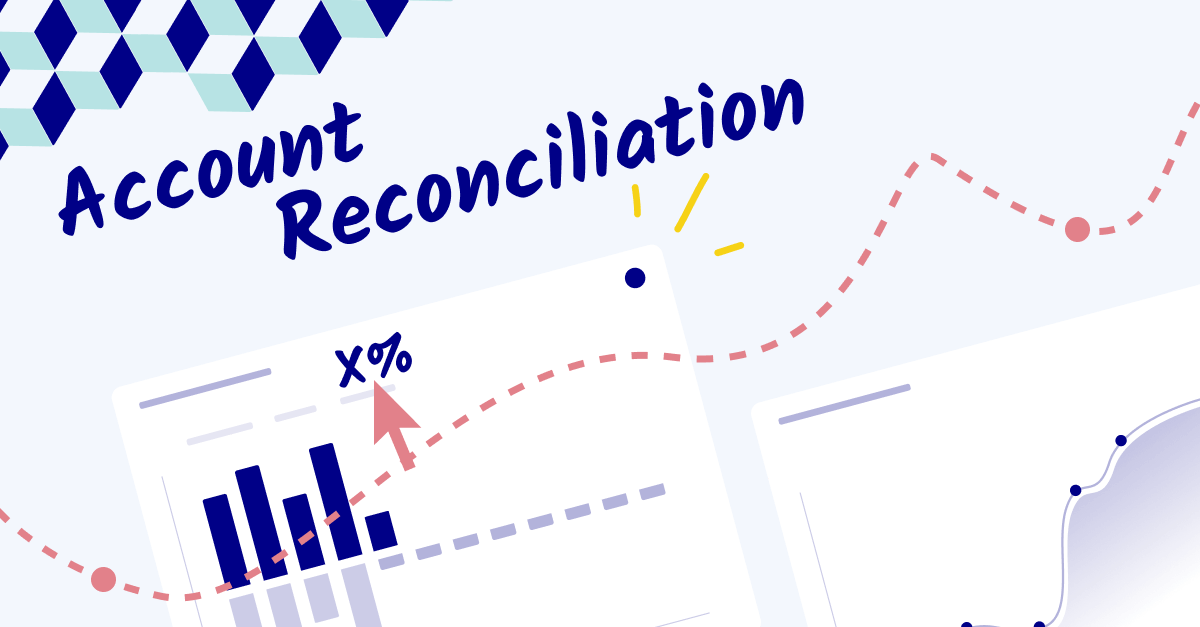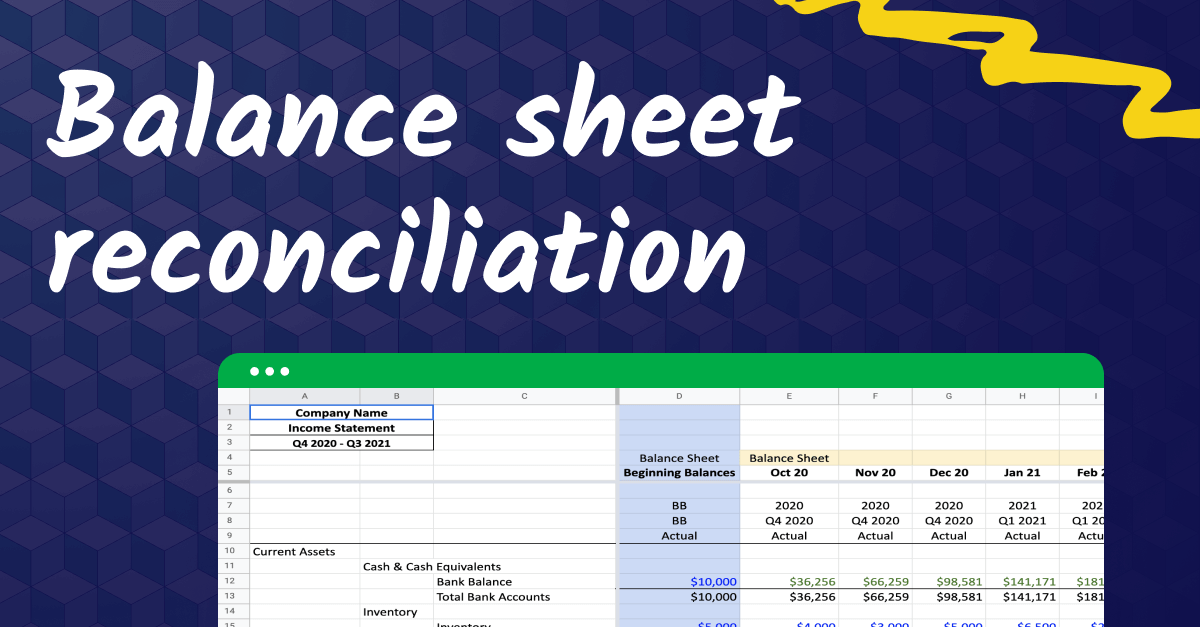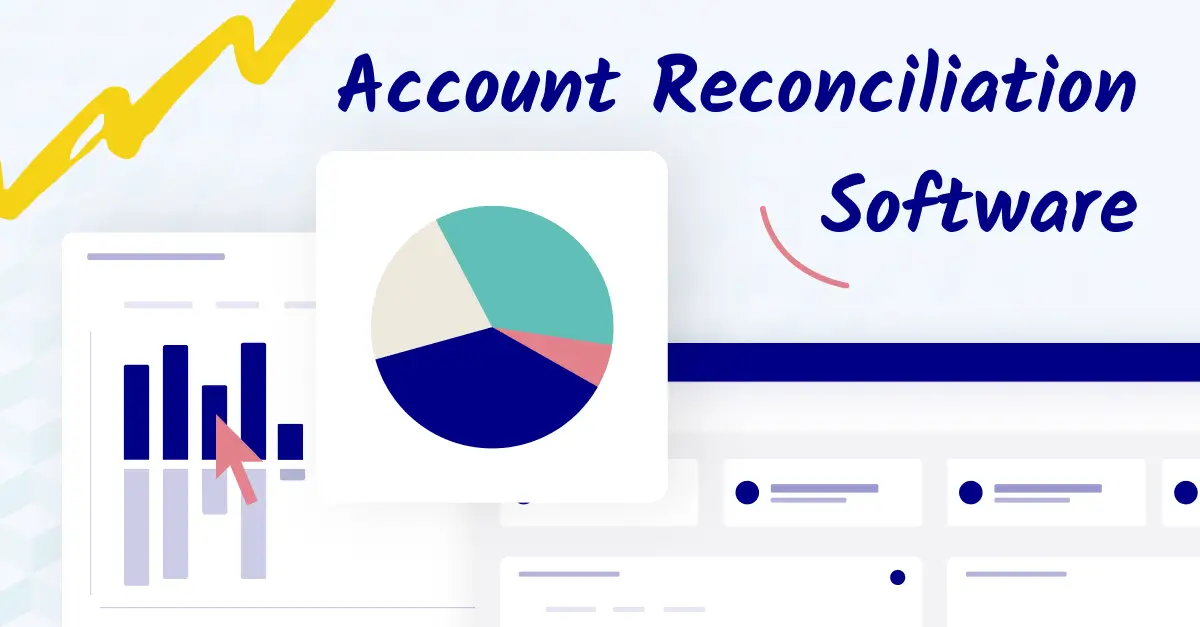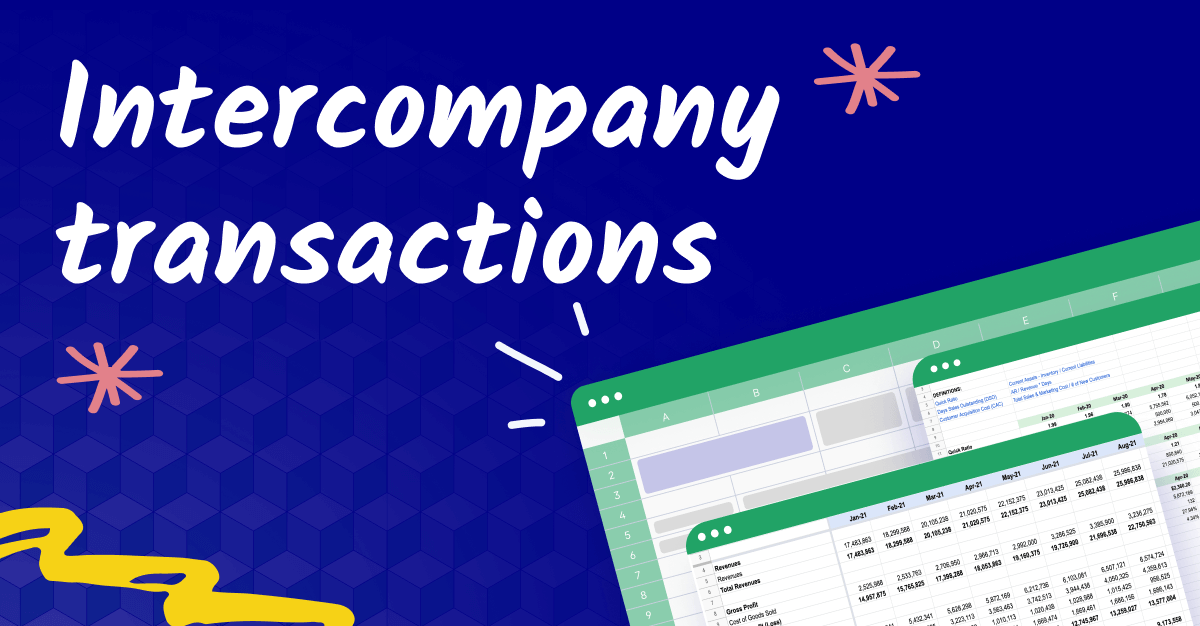What is account reconciliation?
Account reconciliation is an internal process for balancing the books.
A company’s general ledger account is compared to transactions on the bank, credit card, and loan statements to ensure the ledger is accurate. If anything’s missing from the ledger, then reconciliation happens.
Account reconciliations keep a company’s financial statements accurate, ward off fraud, and can be automated to let your finance team worry about bigger things.
Think of it like this: if someone were missing a purchase or two from their budget spreadsheet, then the account balances on their bank account statement would be off.
If 2 + 2 = 3.5 in your company's books, that problem needs fixing. The spreadsheet needs updating to reconcile the balance.
Need more convincing?
Why do we need to reconcile accounts?
Account reconciliation is vital for a few reasons: keeping a company’s financial statements up-to-date and accurate, detecting fraud, and improving existing financial processes.
Account reconciliation is necessary for balance sheet accounts like equity, assets, and liabilities. These are permanent records of a company’s financial health at a point in time, so you need them to be accurate. Reconciling accounts makes this process a lot easier.
(This specific use case is called balance sheet reconciliation, FYI.)
Reconciliation is handy for cash flow statements, too. Getting your reconciled ducks in a row is key if you want an accurate snapshot of your company’s financial health with an up-to-date cash flow projection.
With bigger companies, external auditors often ask for account reconciliation records. This is so they can see how well a business handles its internal checks and controls.
Likewise, when it comes time for revenue recognition and other important filings, account reconciliation needs to happen.
It’s one of those things that can be a pain to do, but do you want to suffer a little bit now, or a lot later?
Ok, so now you know why, but what about how?
When does reconciliation happen?
Account reconciliation can happen as often as you like. Monthly or quarterly works well as a rule of thumb for most companies, but it depends on your unique situation. Some businesses may reconcile accounts yearly, weekly, or even daily (eager beavers).
...So how often do you do it?
Err on the side of doing it regularly if it suits you. Keeping on top of any wayward transactions on the statements helps to deal with any issues that pop up.
If you’ve got cash missing somewhere, you’d probably want to know sooner rather than later, right?
You should always reconcile your accounts before financial statements are due. This is to ensure everything is as accurate as possible before submitting.
Plus, why not make your life easier?

Any finance professional knows the importance of a good account reconciliation process.
Here are some of the benefits of adopting one of your own.
1. Keep financial records accurate
Up-to-date finances make the business world go round. Nobody wants wrong transactions recorded incorrectly, duplicated by accident, or missed entirely.
Regular account reconciliation ensures you know where you stand and improves your financial projections and analysis.
2. Identify fraud
Reconciliation is also helpful in tackling fraud. Spotted a few large discrepancies in the inventory stock? Barry in the warehouse might take home a few cases of product every night.
Account reconciliation helps to nip any wrongdoing in the bud and take action quickly.
3. Opportunities for improvement
If you spot some recurring errors during the reconciliation process, this is an opportunity to reassess your systems that track and record those transactions.
Chances are, there’s room for improvement—and efficiency.
4. Transparency
Finding errors in the books, fixing them, and explaining what’s happened in a report can make your company come across as open and transparent about its finances.
This may be useful if you’re looking for new investors or stakeholders to join your business.
Drawbacks of account reconciliation
While it’s an important part of the financial process, including the month-end close process for many companies, account reconciliation doesn’t come without any negatives.
1. Time-consuming
There’s no denying it: poring over discrepancies in the books can take a long time if there’s a lot to go through.
A small finance team in a large company may struggle to keep up with the number of transactions that need to be regularly checked over for reconciliation.
2. Risk of errors
When going through reconciliation, there’s always the possibility that a transaction still gets missed. This can lead to bigger issues when it’s crunch time for submitting financial accounts.
This is often managed with account reconciliation software to reduce human error, but the software itself is another expense to consider.
3. Complexity
In larger companies with more complex financial structures comes the potential for increasingly complex accounts to reconcile. You may need highly skilled employees to manage and oversee the operation.
Overall, these drawbacks are not significant issues compared to the benefits of having a well-oiled accounts reconciliation machine, but they’re there to consider when scaling up your operations.
What causes reconciliation discrepancies?
Everybody makes mistakes (even though we try not to!)
So there'll always be mistakes or quirks in the financial records that need to be reconciled later.
We’ve run through some of the most common discrepancies that might be skewing your books.
Human error
It happens to the best of us. Any mistakes in noting a transaction, like the wrong account codes or an incorrect receipt image, can cause issues with accounts.
You may be able to reduce the likelihood of this happening by using specialist software to reconcile your accounts.
Unauthorized transactions
This might look like discrepancies in inventory, an employee embezzling money from the company, or fraudulent checks being cashed that don’t appear on the ledger.
Regular account reconciliation should keep on top of this.
Bank errors
Sometimes the bank can make mistakes, too (though they don’t like to admit it).
This can need reconciling if there’s an error, like a transaction duplication from a financial institution.
Timing issues
Sometimes transactions don’t clear until a later period than they’re recorded.
Picture this: a company’s loan is fully repaid at the start of a new year, but the general ledger finishes at the end of the year.
What do you do?
An adjusting journal entry might be needed in this instance. This is where a simple record explaining the transaction is added to the general ledger.
The common types of account reconciliation
Every company looks different, but some standard accounts need checking over and reconciling in most businesses.
Bank account reconciliation
This is the most common account reconciliation type. The process involves ensuring that the bank balances on a statement match what’s recorded on the general ledger. You'll need more checks and balances as you associate more bank accounts with the business.
Once everything matches up, these freshly minted statements can be used for accurate financials in case any stakeholders or investors come knocking.
Credit card accounts reconciliation
This is similar to bank reconciliation but instead involves checking over a company's credit card or loan statements.
Once everything matches up, this statement can be used to show that all debt repayment is on track or paid up.
Accounts receivable and payable reconciliation
Accounts receivable reconciliation is for when a business wants to check whether its AR balance is in sync with what relevant invoices and customer records are saying.
On the flip side, accounts payable reconciliation is looking at if a company’s AP balance matches up to what the records for invoices and vendor records say.
Balance sheet reconciliation
An expansion of the AR and AP reconciliation is to look at the balance sheet and ensure all is well with the financial statements.
This is done by comparing the transactions on the balance sheet with any relevant financial information.
Intercompany reconciliation
Intercompany reconciliation might be necessary if you have multiple businesses under a parent company. This is when the finance teams at both companies review the balances and compare them to the other company’s statements.
This is often the case when two companies work closely together. For instance, the first company could look at its AR balance and see if it matches the second company’s AP books.
Intercompany transactions are an extra layer of complexity for your accounting and finance team, especially toward the beginning of an acquisition or merger.
Account reconciliation methods
Below, we’ve outlined some techniques you can use for your account reconciliation according to your company’s needs.
1. Documentation method
The documentation method compares the general ledger to supporting documentation like bank statements, receipts, and invoices. Any mistakes can be corrected by checking each transaction and seeing if it matches what’s on the ledger.
This is a great place to start your account reconciliation process. It’s a quick and easy way to spot errors, duplications, and discrepancies—all of which must be reconciled before accounts are filed.
Want an example?
An invoice comes in for $1200 to the company from a supplier. Looking at the bank statements, the company can see whether the payment was made on what date and for the right amount. If there was something wrong, then the necessary adjustments are made.
It’s basic, but it's usually all that's needed for smaller operations.
2. Double-entry method
Double-entry accounting is the concept of reconciling a transaction in two places. Recording a transaction in two places each time adds an extra layer of checks to make spotting any mistakes easier.
For instance, if a business has $5,000 recorded on its accounts payable, the general ledger should match up to recording $5,000 on its liabilities. It’s a simple and transparent method—no wonder it’s so popular!
3. Analytic method
The analytic method involves taking a general ledger’s information and comparing it to other financial data. This method takes a broader view of transactions and analyzes the data to create trends and predictions.
The advantage of this method is how it can be used to improve efficiencies in sales or spending. You can also spot new trends in your company’s financial data that may not immediately be apparent. Zooming out is sometimes the best way to spot what works well and what doesn't.
Let’s look at how this might work. A business might want to analyze its payroll financials. This data is compared to the number of employees and the timesheet recordings using the analytic method.
The data show whether productivity is high or a turnover issue needs rectifying.
What are the 7 steps in account reconciliation?
The reconciliation process is relatively simple if you’ve got good records and some decent software to help.
1. Get everything together
To start, you’ll need your company’s ledger account to hand and all the supporting documentation needed.
This could include internal financial records and external sources, such as bank statements.
2. Review the statements
Take a look over the bank statement and go through each transaction, one by one. Is everything matching up with what you’re seeing on the general ledger? Great, you can stop here.
Found something in the statements that’s not on there? Highlight them and move on to the next step.
3. Investigate the discrepancy
Time to get your sleuthing hat on. Look at the outlying transaction and see what might have gone wrong. Above, we went through some of the likely causes.
In this example, we’ll say there’s a number in the wrong place on the ledger.
4. Make the changes
A self-explanatory one: amend your records so that everything matches up on the statement and your accounts.
If you’re using software, the newly reconciled item should disappear.
5. Prepare a report
It’s worth noting the reconciled items in a report in case your company gets audited. A report will reassure stakeholders if the reconciliation reveals something more serious, like fraud.
Preparing a report explains any discrepancies, why the discrepancy has happened, and what’s been done to resolve the matter.
It gives the financial records some transparency and can be used as a record in case any questions arise.
As the finance team, building and maintaining trust with stakeholders is paramount. Transparent reporting helps with that.
6. Review and approve the report
Another self-explanatory step, but the approval layers will depend on your company's size. If fraud has been involved, stakeholders and investors might also need to sign off on the report.
Keep the approved version backed up if auditors want to see it further down the line. Then, you’re all finished with your reconciliation.
7. Review regularly
A bonus step is to review your accounts regularly, especially if you have many transactions or a complex financial structure.
Catching errors and discrepancies early will help keep your finances accurate and up to date.
Conclusion
Account reconciliation is one of your best tools in the accounting process.
It ensures that the general ledger balance matches your financial statements and uncovers duplicate or missing transactions.
It also prevents you from running into bigger trouble with your finances down the line.
If you find your account reconciliation time-consuming and error-prone, look at Cube.
Cube gives you the power of enterprise-level FP&A and accounting software right in your spreadsheet.
No need to learn new formulas, migrate your systems, or say goodbye to Excel.
Click the image below to request a free demo and see how Cube can help you save time and reduce errors.



.png)









